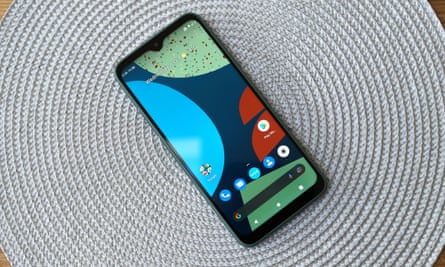
The current status quo of smartphone design, repair and longevity could finally be upended in favour of users – and the planet. That is the message from campaign groups on the landmark overhaul of rules concerning batteries and eco-sensitive design working their way through the various legislative bodies of the European Union – a market big enough to force manufacturers to change, even if EU rules don’t directly apply to other regions.
MEPs voted on 14 June to accept new battery regulations, elements of which look to ensure cells in smartphones and gadgets can be replaced with parts available for five years after the device is discontinued. In many cases, the rules say, batteries should be user-replaceable “without requiring the use of specialised tools” and without the heat or solvents typically required to unglue components today. Manufacturers also won’t be able to use software to stop batteries installed by third parties from working.
Despite concerns over caveats about water-resistant devices and what actually counts as user-replaceable or a specialist tool, the move was heralded as a huge step forward, with Cristina Ganapini, coordinator of the Right to Repair Europe campaign, calling it “a big success for the right to repair”, though the regulations are not due to kick in until 2027.
At the same time, complementary new rules on ecodesign were voted through that go even further to “make sustainable products the norm”, with designs that are easier to repair, upgrade and recycle.
The ecodesign proposal sets out minimum requirements for smartphones and tablets, covering protection from dust and water, resistance to accidental drops, and battery longevity. It would also ensure the supply of spare parts for at least seven years after the discontinuation of the device, plus access to the software required to ensure they work after professional repair.
All these aspects are key to more sustainable devices championed by the right to repair movement. But they could force a change in the smartphone market that people may not expect.
“To have truly replaceable batteries, smartphones will have to get bigger,” said Francisco Jeronimo, vice-president of devices analysis at market research company IDC. “While Apple may have the expertise and customer support network to make battery replacement in a thin design possible, smaller vendors lack that competitive advantage and will have to compromise on design.”
Indeed, the most repairable device on the market, the Fairphone 4 with its modular battery replaceable using just a fingernail, is significantly chunkier and more expensive than your average phone – a trade-off many will see as worthwhile.
But just as important are the proposal’s new rules for software, which seek to force manufacturers to provide updates for at least five years after the device has been discontinued.
“It’s not as obvious to the end user but software plays a big role in longevity,” said Agnès Crepet, head of IT and software longevity at ethical phone company Fairphone. “You need software running on your phone to keep it longer; first, for security purposes, because if you don’t have software updates on your phone then your data is at risk, but also for apps.
“WhatsApp could stop working, so could banking apps, because they are fairly strict on security patches, so if your operating system is not being updated, they could just stop working.”
The average phone receives only two to three years of updates from its initial release – not when it is bought or leaves the market. Top-end phones from big names such as Google and Samsung typically get five years of updates, with Apple often providing six or more years, which is still short of the ideals.
“Even if the hardware is perfect, if apps don’t work, people will want to change it,” said Crepet, who suggested forcing manufacturers to allow the use of open-source software such as LineageOS or PostmarketOS as a solution for some users at the end of a device’s official support.
While this may be a good step forward for sustainability, as with hardware longevity, it may not result in the majority of people keeping their phones for longer even if they could. According to a consumer survey by IDC, 62% of respondents replace their phones every one to three years and only 24% of people want to keep their handsets longer. The latter group is growing, but the No 2 customer complaint after battery life is phones being too slow.
“Software updates require more and more of the hardware, not just in processing power but in the amount of data people generate in files and apps, which causes the phone to become slower the longer it is used,” said Jeronimo. “The technology is just moving on too fast. Even if you could give people a phone that lasts seven years, they will want a new one for a new chipset to keep up with software and hardware improvements such as 4G, 5G or 6G etc.”
The biggest boost may therefore be in the second or third-hand market. A phone that still has software support holds significantly more value and can lead a longer useful life, which keeps it out of landfill and reduces the ecological burden.
The rules won’t come into force in the immediate future, as the regulations still need to be approved and have a 21-month grace period after they become law. But once they do, forcing significantly longer software support from manufacturers may also have unanticipated consequences for the phone market.
“The cost for a small vendor of updating phone software is in the seven-figure, £1m-plus range, so they will have a massive challenge to support their devices long enough,” said Jeronimo. “It will put many of them out of business, particularly the small, EU-based ones, and cause consolidation in the market with a reduction in the number and variety of products, as the burden will just be too great.”
Sustainability guide
If you must replace your phone today, here are the most sustainable new handsets available – or better yet, look for a refurbished model.
Nokia G22: £114
The Nokia G22 is a budget Android model designed to be repaired at home using fairly simple tools, with replacement parts readily available from iFixit. The short software support life of only three years from release is disappointing, however.

Fairphone 4: £499
The Fairphone 4 is the most repairable and ethical Android phone available with a modular design, a battery you can replace without tools and a five-year warranty. It is made of recycled and fair trade materials, pushes for fair pay in the supply chain and is aiming for upgrades to Android 13, 14 and 15.

Apple iPhone 14: £849
Apple’s iPhone 14 has longer software support than most other handsets, is made of recycled materials and has a more repairable design than previous models, though not on the same scale as the Fairphone 4.



